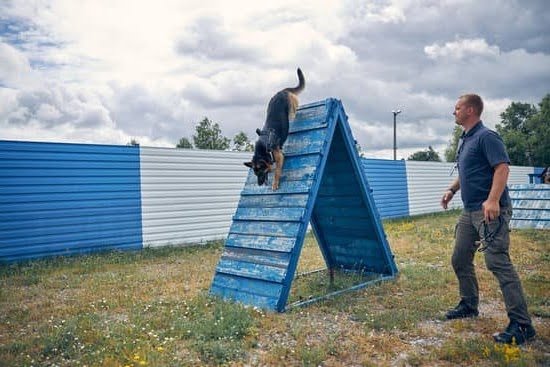As a responsible pet owner, understanding the dangers of snakes and the importance of training your dog to avoid them is crucial for their safety. Knowing how to train a dog to avoid snakes can prevent potentially harmful encounters and even save your pet’s life.
Identifying common snake species in your area is key to knowing what to look out for when you’re out and about with your dog. Understanding the different types of snakes and their habitats will help you take proactive measures to keep your dog safe from potential encounters.
Teaching your dog to recognize snake scent through scent training is an essential step in preparing them to identify and avoid snakes. This involves positive reinforcement training using treats and praise to encourage avoidance behavior, as well as simulated snake encounters that safely expose your dog to snake-like objects. Advanced techniques such as teaching your dog to respond to specific snake avoidance commands further strengthen their ability to stay away from snakes during outdoor activities.
Identifying Common Snake Species in Your Area
Living in an area where snakes are common, it’s essential to train your dog to avoid them. The first step in this process is identifying the common snake species in your area so that you’ll know what to look out for. Different types of snakes have different markings, behavior, and habitats, so being able to recognize them can help you protect your dog from potential encounters.
One of the most effective ways to identify common snake species in your area is by consulting with local wildlife experts or visiting nature centers or parks where they may provide information about the prevalent snakes. Additionally, you can also research online resources and field guides that are specific to your region. By learning about the appearance and behavior of these snakes, you’ll be better equipped to protect your furry friend.
Understanding what types of snakes are present in your surroundings will allow you to take necessary precautions when walking or hiking with your dog. This knowledge will also aid in preparing for training exercises aimed at teaching your canine companion to avoid these potentially dangerous reptiles.
With this understanding and preparation, you can begin training sessions on how to train a dog to avoid snakes using various techniques such as scent training, positive reinforcement, simulated snake encounters, advanced training commands, and real-life practice scenarios.
Teaching Your Dog to Recognize Snake Scent
When it comes to protecting your dog from the dangers of snake bites, one crucial aspect of training is teaching your canine companion to recognize the scent of snakes. This skill can be life-saving, as dogs will often detect a snake’s presence through their sense of smell before they even see it.
The first step in scent training is familiarizing your dog with the different types of snake scents that are common in your area. Some common species include rattlesnakes, copperheads, and coral snakes. By exposing your dog to these scents in a controlled environment, you can help them develop the ability to differentiate between harmless smells and those of dangerous snakes.
One effective way to introduce your dog to snake scent is by using specially designed kits that contain vials of snake musk. These kits can be purchased from pet supply stores or online retailers. When using these kits, start by allowing your dog to sniff the vial while on a leash, then observe their reactions closely. Over time, they should begin associating the scent with something negative and learn to avoid it.
| Snake Species | Common Locations |
|---|---|
| Rattlesnake | North America, South America |
| Copperhead | Eastern and Central United States |
| Coral Snake | Southeastern United States |
Positive Reinforcement Training
Understanding Positive Reinforcement
Positive reinforcement involves rewarding your dog for exhibiting the desired behavior. In the case of snake avoidance training, this means rewarding your dog for displaying behaviors that indicate recognition and avoidance of snakes.
Using Treats and Praise
When training your dog to avoid snakes, it’s important to use high-value treats that your dog finds especially enticing. This could be small pieces of cooked chicken, cheese, or commercial dog treats. Whenever your dog demonstrates an avoidance behavior such as turning away from a simulated snake, immediately reward them with a treat and plenty of verbal praise.
Consistency Is Key
Consistency is crucial in positive reinforcement training. It’s important to consistently reward your dog for exhibiting the desired behavior in order to reinforce the association between avoidance and positive outcomes. Over time, as your dog learns that avoiding snakes leads to rewards, they will be more likely to continue with the avoidance behavior.
In addition to using treats and praise during training sessions, it’s important to incorporate simulated snake encounters and advance training techniques in order to further reinforce avoidance behaviors in various situations. With consistency and patience, positive reinforcement can be an effective way to train your dog to avoid snakes.
Simulated Snake Encounters
When it comes to training your dog to avoid snakes, one important step is to safely expose them to snake-like objects. This can help your dog recognize and avoid potential threats in the future. Here’s how you can go about this crucial aspect of snake avoidance training.
First, start by finding realistic snake replicas or snake-scented items that are specifically designed for training purposes. These can include rubber snakes, snake skins, or items infused with a safe amount of snake scent. Introduce these objects to your dog in a controlled environment, such as your backyard or a quiet indoor space.
During this simulated encounter, observe your dog’s reaction closely. If they show curiosity or approach the object, use verbal cues or commands to redirect them away from it. You can also utilize positive reinforcement techniques by rewarding them with treats and praise when they choose to move away from the fake snake.
It’s important to gradually increase the difficulty of these simulated encounters as your dog becomes more comfortable and confident in avoiding the snake-like objects. You can also vary the locations and scenarios in which you conduct these exercises to ensure that your dog generalizes their avoidance behavior across different environments.
| Training Tip | Example |
|---|---|
| Use consistent verbal cues | Say “leave it” or “avoid” when guiding your dog away from the simulated snake |
| Vary scenarios | Practice simulated encounters in different locations such as indoors, outdoors, and during walks |
| Gradually increase difficulty | Start with simple encounters and progress to more realistic simulations as your dog becomes more adept at avoiding snakes |
Remember that patience and consistency are key when exposing your dog to snake-like objects as part of their avoidance training. By following these steps and gradually increasing the complexity of the exercises, you can help prepare your furry friend for potential encounters with real snakes while keeping them safe from harm.
Now that you understand how essential this step is in preparing your dog for avoiding real snakes effectively, let’s move on to the advanced techniques for teaching your canine companion how to respond promptly when faced with a potential threat.
Advanced Training Techniques
Teaching your dog to avoid snakes is a crucial skill that can potentially save their life. Once your dog has mastered recognizing snake scent and simulated encounters, it’s time to move on to advanced training techniques. This involves teaching your dog to respond to specific commands that signal the presence of a snake.
To effectively train your dog to avoid snakes, consider the following advanced techniques:
1. Teach command words: Start by introducing specific command words that signal the presence of a snake, such as “danger” or “leave it.” Use these commands consistently during training sessions to help your dog associate them with the need to avoid a potential threat.
2. Practice obedience: Reinforce obedience training alongside snake avoidance commands. Your dog should be able to respond promptly and reliably to these commands, even in distracting environments.
3. Use visual aids: Introduce visual cues, such as pictures or videos of snakes, to reinforce the association between the command words and the potential danger of encountering a snake.
Implementing these advanced training techniques will require patience and consistency, but they are essential for ensuring that your dog is well-prepared to avoid snakes in real-life situations.
Ultimately, taking the time to properly train your dog in snake avoidance can greatly reduce their risk of snake bites and provide you with peace of mind during outdoor activities. Hopefully, understanding these advanced training techniques can help you effectively teach your furry companion how to recognize and steer clear of snakes effectively.
Practicing in Real-Life Situations
Taking your dog on walks and hikes is a crucial part of reinforcing their snake avoidance training. It’s important to expose them to real-life situations where they may encounter snakes, so they can practice the skills they’ve learned. Here are some tips for practicing in real-life situations:
- Start in familiar areas: Begin by walking your dog in places they are already familiar with, such as your neighborhood or a nearby park. This will help them feel more comfortable as they continue to work on avoiding snakes.
- Keep an eye out for snake habitats: Be aware of your surroundings and look for potential snake habitats, such as tall grass, rocky areas, or woodpiles. This will help you remain vigilant and prepare your dog to recognize these environments.
- Use positive reinforcement: As you walk or hike with your dog, be sure to praise and reward them when they exhibit avoidance behavior. This could include giving them treats or offering verbal praise when they successfully avoid sniffing or approaching areas where a snake may be hiding.
As you continue to practice with your dog in real-life situations, remember that consistency and patience are key. It may take time for your dog to fully grasp the concept of avoiding snakes, so be prepared to reinforce their training regularly.
Lastly, always keep safety in mind when taking your dog on walks or hikes. Stay on designated trails, keep your dog on a leash if required, and familiarize yourself with snake bite first aid just in case of an emergency.
By consistently practicing in real-life situations and maintaining vigilance, you can help ensure that your dog is well-prepared to avoid snakes when out and about.
Maintaining Vigilance
In conclusion, training your dog to avoid snakes is an essential aspect of responsible pet ownership, especially if you live in an area where encounters with venomous snakes are common. Understanding the danger that snakes pose to your dog’s well-being and knowing how to identify common snake species in your area are crucial first steps in this process.
Teaching your dog to recognize snake scent and using positive reinforcement training techniques can help them learn to avoid these potentially dangerous reptiles.
One effective way to train a dog to avoid snakes is by using simulated snake encounters, exposing them safely to snake-like objects. Additionally, advanced training techniques such as teaching your dog to respond to specific snake avoidance commands can provide an extra layer of protection. It’s also important to practice in real-life situations by taking your dog on walks and hikes, reinforcing their training and ensuring they can consistently recognize and avoid snakes.
Maintaining vigilance is key when it comes to ongoing snake avoidance training for your dog. Regularly refreshing their training and being aware of potential pitfalls, such as complacency or becoming overconfident, are important factors in keeping your pup safe from snake encounters.
By following the tips outlined in this article and staying proactive in maintaining your dog’s snake avoidance skills, you can significantly reduce the risk of a potentially detrimental encounter with a snake. Remember that truly mastering how to train a dog to avoid snakes takes time, patience, and consistent effort, but the safety of your beloved pet makes it well worth the investment.
Frequently Asked Questions
Can You Teach a Dog to Avoid Snakes?
Yes, you can teach a dog to avoid snakes through specialized training. This typically involves using snake-scented items and training tools to simulate encounters with snakes, so the dog learns to recognize and avoid them.
Do Dogs Instinctively Know to Avoid Snakes?
While some dogs may have an innate fear of snakes, it cannot be assumed that all dogs instinctively know to avoid snakes. In fact, many dogs may be curious or unaware of the danger posed by snakes, making training essential for their safety.
Does Snake Training for Dogs Work?
Snake training for dogs has been shown to be effective in many cases. By exposing dogs to the scent and sight of snakes in a controlled environment, they can learn to associate these cues with potential danger and respond by avoiding them in the wild.
This type of training can potentially save a dog’s life if it encounters a snake in the future.

Welcome to the blog! I am a professional dog trainer and have been working with dogs for many years. In this blog, I will be discussing various topics related to dog training, including tips, tricks, and advice. I hope you find this information helpful and informative. Thanks for reading!





